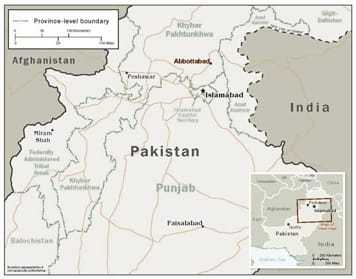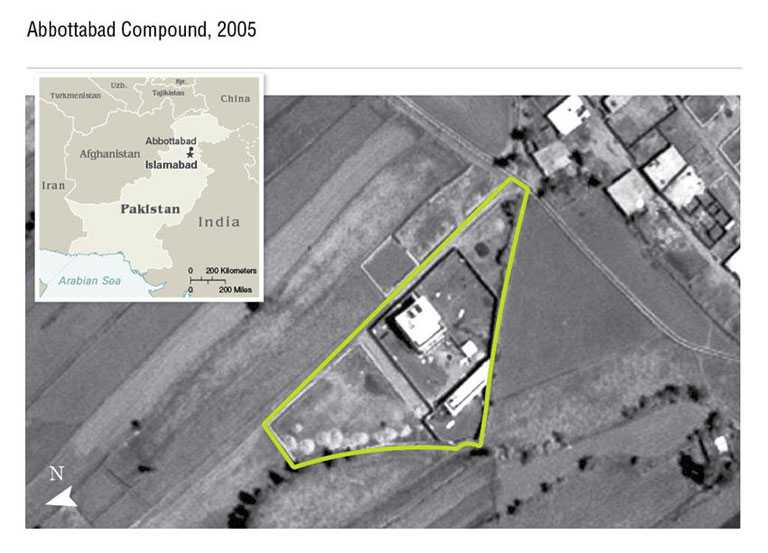About the Final Chapter in the Hunt for Bin Ladin
Abbottabad, Pakistan–In the early morning hours of May 2, 2011, a US military raid on an al-Qa’ida compound killed Usama Bin Ladin, America’s most wanted terrorist. The mission’s success was the culmination of many years of complex, thorough, and highly advanced intelligence operations and analyses led by the CIA with support from partners across the Intelligence Community.

CIA’s network of intelligence sources in Afghanistan located the compound where Bin Ladin was hiding.
Shortly after the 9/11 terrorist attacks on the United States, the CIA began collecting information on key individuals connected to or providing support to Bin Ladin. Reporting made clear early on that he communicated via a network of couriers. It was years later, however, before more was known about one key courier than simply his kunya, or operational pseudonym. Analysts then worked several more years before identifying the area in Pakistan where the courier was believed to be located.

By late 2010, further intelligence enabled the identification of the courier’s compound in Abbottabad, a town in Pakistan’s Khyber-Pakhtunkhwa Province (formerly the Northwest Frontier Province), about 35 miles north of Islamabad. The compound and its main residence had extensive security features unusual for the area: high walls topped with barbed wire, double entry gates, opaque windows, no apparent internet or telephone connections, and all trash burned rather than collected. Moreover, the two registered owners did not appear to work or have an income that would allow them to afford such a large residence. This led the Intelligence Community to assess that the compound was probably being used to hide Bin Ladin, as well as the courier.

The operation on May 2nd, authorized by the President on April 29th, was a surgical raid by a small team of special operations forces designed to minimize collateral damage and to pose as little risk as possible to noncombatants on the compound or to Pakistani civilians in the neighborhood. In the aftermath, Bin Ladin was positively identified via several independent means.

The large quantity of materials collected from the compound required time for a thorough review. The CIA led a multi-agency task force to prioritize, catalogue, and analyze them for intelligence about al-Qa’ida’s affiliates, plans and intentions, and current threats. The collected materials indicated that Bin Ladin remained an active leader in al-Qa’ida, providing strategic, operational, and tactical instructions to the organization. Though separated from many al-Qa’ida members in remote areas of the region, he was far from a figurehead. Bin Ladin remained in charge while in hiding.
Bin Ladin was al-Qa’ida’s founder and only amir, or commander, in its history until his death. He was largely responsible for the organization’s mystique, its ability to raise money and attract new recruits, and its focus on the United States as a target for terrorist attacks. The death of Usama Bin Ladin marked a significant victory in the US-led campaign to disrupt, dismantle, and defeat al-Qa’ida.

The daring raid that ensured that Bin Ladin will never kill again was a team effort, the product of increased integration within the Intelligence Community and of close collaboration with our military partners. The CIA was at the center of it all, driving the collection of vital information, assessing each piece of data, and analyzing all sources to produce the compelling intelligence case that led US forces to Abbottabad. The Agency’s contributions were the product of a decade of positive changes–improved collection, analysis, technology, and support.
